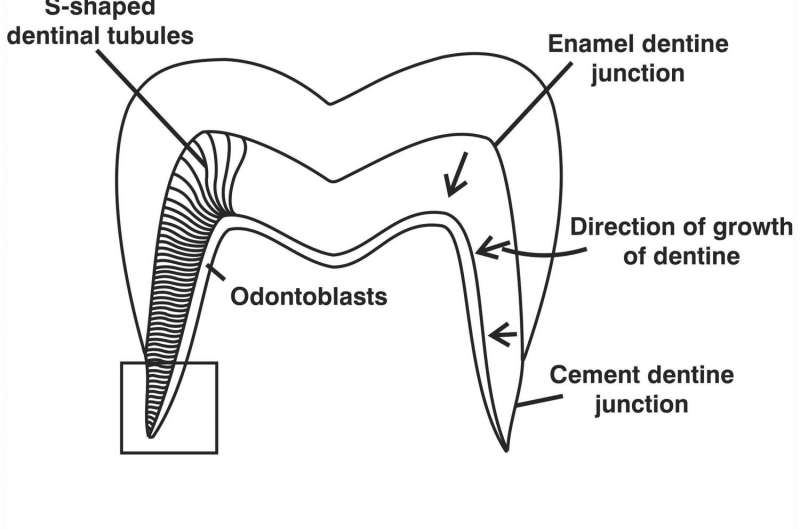Isotopic analysis of teeth may identify starvation in victims of the Great Irish Famine

Isotopic analysis of teeth may identify signs of starvation in human tissues from 19th century Irish workhouse residents, according to a study published August 10, 2016 in the open-access journal PLOS ONE by Julia Beaumont from the University of Bradford, United Kingdom, and colleagues.
To investigate dietary and physiological changes during the Great Irish Famine of the 19th century, the authors of the present study analyzed the carbon and nitrogen isotope ratios of one tooth from each of 20 Kilkenny Union workhouse residents in Ireland, including some who died in childhood. The authors compared the dentine collagen in tiny sections of the teeth, which represents diet at the time of tooth growth, with bone collagen from ribs, which represents the final few years of life, and historical records on food availability at the time.
The researchers' isotopic analysis not only recorded the expected dietary change from potatoes to maize which, according to historical records, was imported from America to provide relief during the famine, but it also revealed prolonged nutritional and other physiological stress resulting from insufficient sustenance during childhood.
This study shows that incremental dentine collagen isotope analysis may identify periods of physiological stress such as famine in both adult and juvenile skeletons if it occurred during tooth development. These findings may have forensic and archaeological applications for the identification of populations and individuals for whom nutritional stress may have contributed to their death, though further research is needed to refine the method of aging the incremental collagen.
"Our scientific analysis produces detailed dietary histories from the time when teeth are growing," said Julia Beaumont. "Because the workhouse residents were given maize as a famine relief food, we could identify a marker for starvation in the teeth formed just before the change, the first time this has been seen in dentine."
More information: Beaumont J, Montgomery J (2016) The Great Irish Famine: Identifying Starvation in the Tissues of Victims Using Stable Isotope Analysis of Bone and Incremental Dentine Collagen. PLoS ONE 11(8): e0160065. DOI: 10.1371/journal.pone.0160065



















